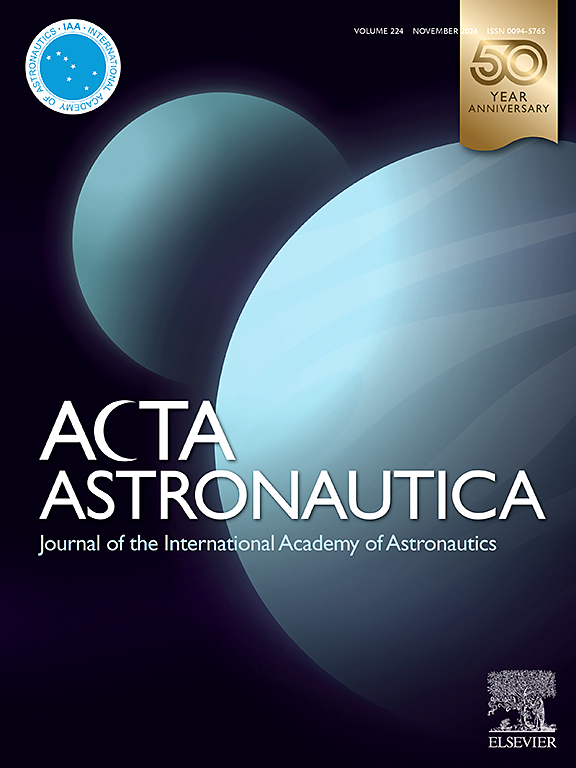Aerodynamic parameter identification for aeroassisted vehicle via cubature smoother with expectation-maximization
IF 3.1
2区 物理与天体物理
Q1 ENGINEERING, AEROSPACE
引用次数: 0
Abstract
Aeroassisted orbital maneuvers are recognized as a potentially efficient mode of trajectory adjustment due to their significant reductions in fuel consumption and flexible path correction capabilities. The aerodynamic parameter identification during atmospheric flight, which are characterized by trans-regime and hypersonic speeds, is crucial for enhancing the precision and safety of the aerodynamic-assist systems, given their sensitivity to minor perturbations in aerodynamic parameters. This paper introduces a high-precision aerodynamic parameter identification method based on state normalization and sample point generation with a tuning factor. A normalized dynamic and measurement model for aeroassisted maneuvers is established to mitigate the high dynamism of angular states such as heading angle due to wide-ranging positional and velocity changes. An initial data update strategy that accounts for global state errors is proposed, along with an Expectation-Maximization and Cubature Kalman Smoother (EM-CKS) designed to reduce the sensitivity of aerodynamic parameter identification to initial errors. To enhance the robustness of the algorithm to various mission scenarios, a sample generation method incorporating a tuning factor is also proposed, which broadens the adaptability and transferability of the presented method. Simulation analysis demonstrates the method's efficacy in aerodynamic parameter identification across different initial state variations and lift-to-drag ratios, using two typical Martian aeroassisted maneuver scenarios: extensive aerodynamic descent and aerodynamic capture. The results confirm the method's convergence and robustness.
求助全文
约1分钟内获得全文
求助全文
来源期刊

Acta Astronautica
工程技术-工程:宇航
CiteScore
7.20
自引率
22.90%
发文量
599
审稿时长
53 days
期刊介绍:
Acta Astronautica is sponsored by the International Academy of Astronautics. Content is based on original contributions in all fields of basic, engineering, life and social space sciences and of space technology related to:
The peaceful scientific exploration of space,
Its exploitation for human welfare and progress,
Conception, design, development and operation of space-borne and Earth-based systems,
In addition to regular issues, the journal publishes selected proceedings of the annual International Astronautical Congress (IAC), transactions of the IAA and special issues on topics of current interest, such as microgravity, space station technology, geostationary orbits, and space economics. Other subject areas include satellite technology, space transportation and communications, space energy, power and propulsion, astrodynamics, extraterrestrial intelligence and Earth observations.
 求助内容:
求助内容: 应助结果提醒方式:
应助结果提醒方式:


